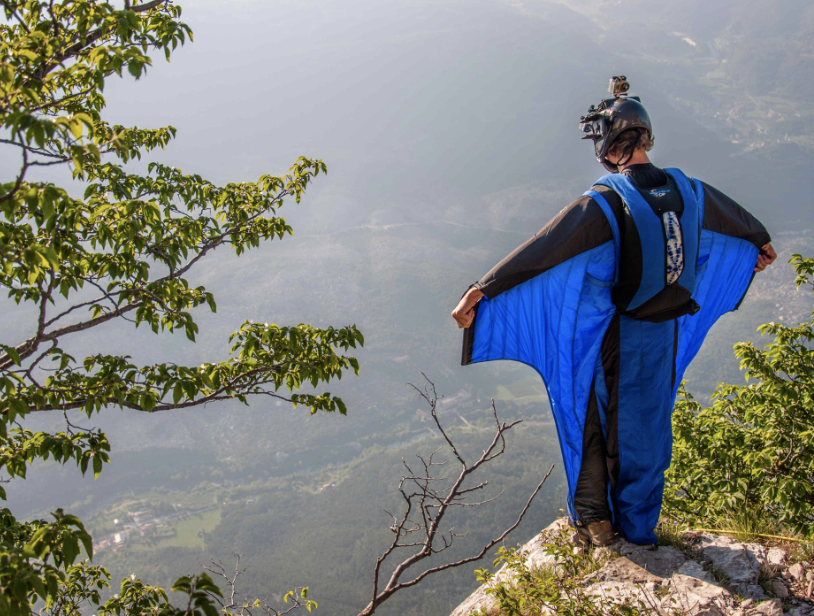Training you’ll need for BASE Jumping or Wingsuit Flying
Engaging in extreme sports like BASE jumping and wingsuit flying requires a great deal of physical and mental preparation, as well as specialized training to ensure safety and proficiency. Some key aspects:
Fitness: Developing strength, endurance, and overall physical fitness is crucial. This includes cardiovascular conditioning, core strength, and specific muscle groups used in the sport.

Flexibility: Maintaining flexibility is essential for fluid movements and body control during jumps and flights. Consider yoga to help yourself prepare.

Mental Prep: Extreme sports demand mental toughness and the ability to stay calm in high-pressure situations. Visualization, meditation, and stress management are invaluable.

Risk Assessment: Understanding the risks associated with these sports and having a realistic assessment of your own abilities is vital. It's crucial to make informed decisions about when and where to jump or fly.
Skills Training:
BASE Jumping: To become a BASE jumper, you typically start with skydiving training to become proficient in freefall control, parachute deployment, and emergency procedures. This is followed by specific BASE jumping instruction that focuses on low-altitude jumps from fixed objects (Buildings, Antennas, Spans, and Earth).

Wingsuit Flying: After mastering skydiving skills, wingsuit flying training involves learning to fly and control a wingsuit. This includes body positioning, aerodynamics, and navigation. It's essential to start with non-wingsuit skydiving to gain experience before transitioning to a wingsuit.

Know Your Equipment: Understanding each piece of equipment used in these sports is critical for safety. Training should cover the proper use and maintenance of parachutes, harnesses, helmets, wingsuits, and other gear.
Rigorous pre-flight equipment checks are essential to reduce the risk of malfunctions.
Jump Planning & Navigation: Knowing where and when to jump or fly is learned in training and should include planning and executing jumps or flights in safe and legal locations. Navigation skills are essential for ensuring that jumps or flights take place within the intended airspace and landings are in safe areas.

Safety Protocols: Comprehensive knowledge of safety protocols and emergency procedures is essential. This includes how to handle equipment malfunctions and what to do in case of emergencies. Learning from experienced mentors or instructors is highly recommended.
Legal & Ethical Considerations: Understanding the legal and ethical aspects of BASE jumping and wingsuit flying is essential. Many locations have strict regulations or prohibit these activities altogether.
Experience Building: Gaining experience through practice and progressively more challenging jumps or flights is crucial. Start with easier jumps or flights and gradually work your way up to more advanced and extreme locations.

Community & Mentorship: Joining a community of experienced BASE jumpers or wingsuit flyers can provide valuable guidance, mentorship, and a support network.

Extreme sports are inherently risky, and safety must be the top priority. Proper training, equipment, and ongoing skill development are essential to minimize the associated risks, and it’s important to comply with local laws and regulations.
Get started! https://ultimateskydivingadventures.com/how-to-start-wingsuit-skydiving-a-step-by-step-guide
